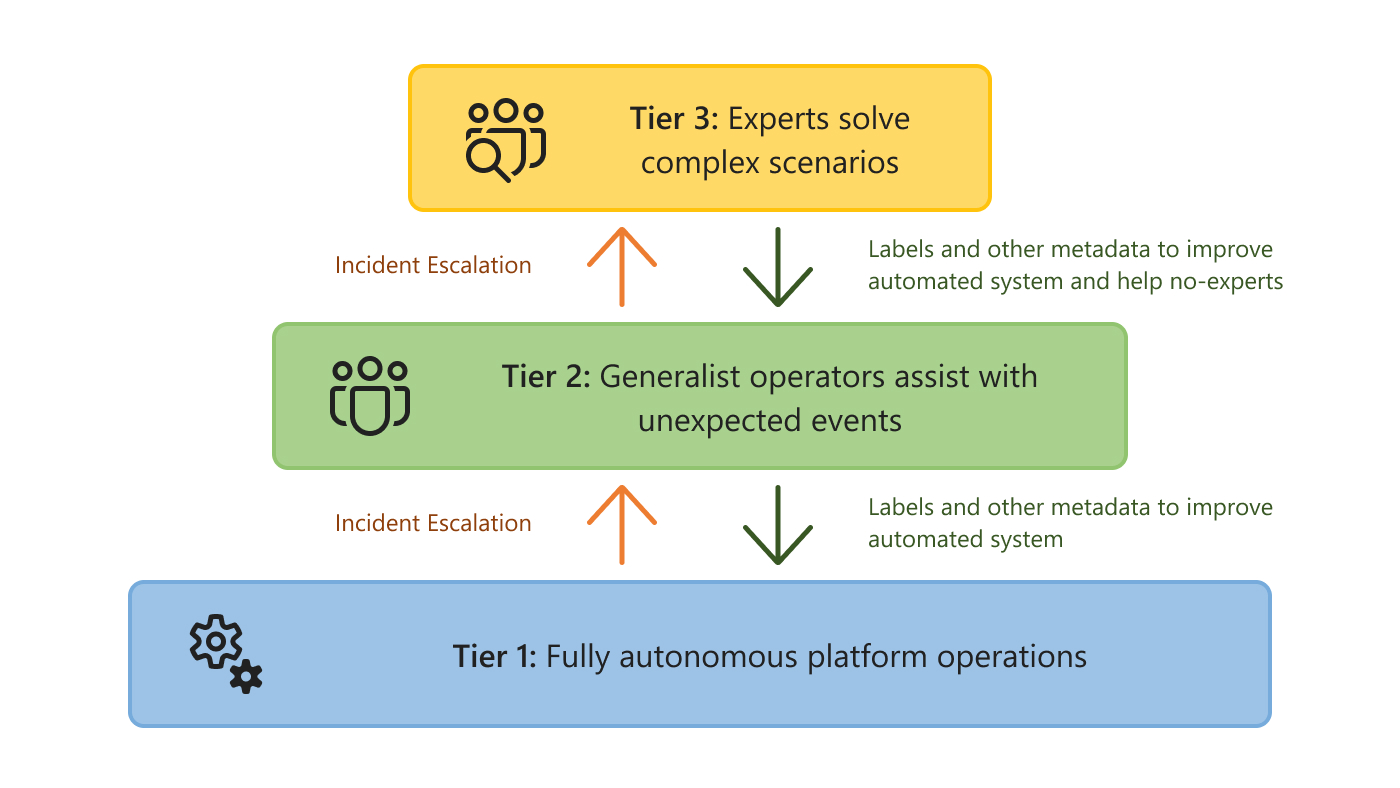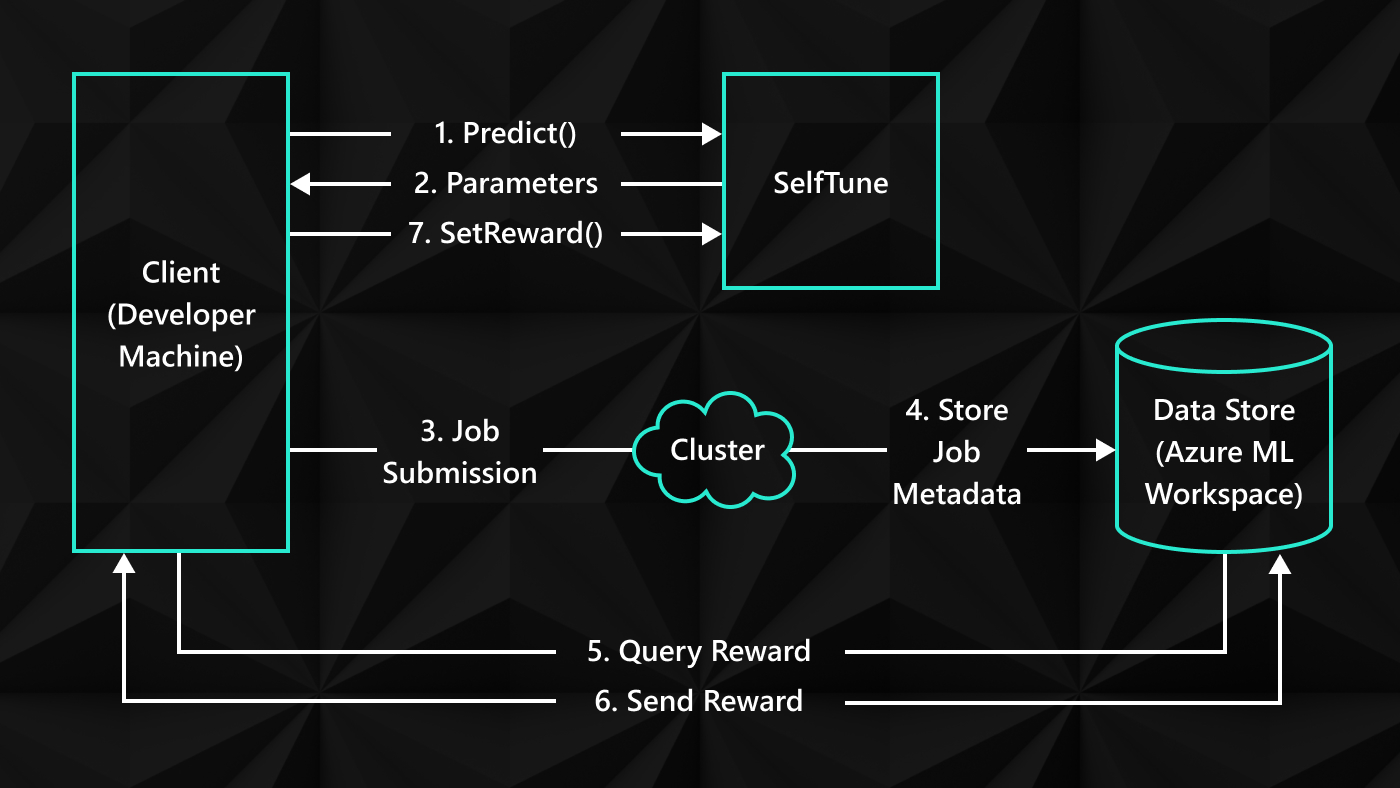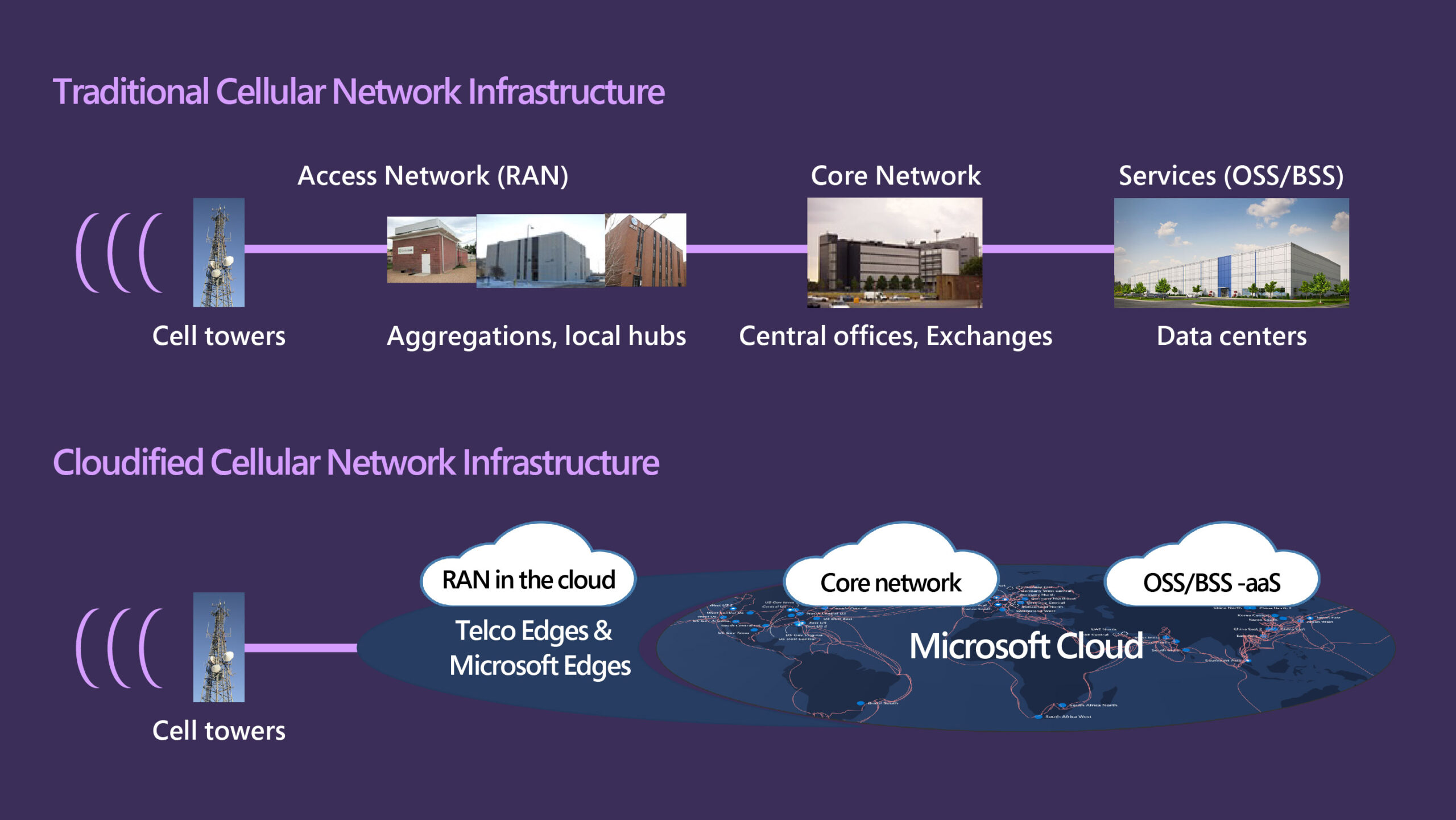
Editor’s note:
In recent years, telecommunications operators have faced a growing challenge to meet surging global demand for immersive online services and collaboration tools. Upgrading their proprietary networks to prepare for 5G and beyond would require major capital expenditures, even as competition was driving down the prices they could charge.
Cloud computing offered an inevitable option, with more flexibility and scalability than legacy systems. It would lower infrastructure costs, automate operations with AI and machine learning, and set the stage for waves of innovation.
Traditional telco equipment vendors wanted operators to build their own dedicated “telco clouds,” arguing that public clouds were inadequate. But in 2020, Microsoft unveiled Azure for Operators (opens in new tab) to bring carrier-grade cloud and edge technologies to telco operators and to partner with them to create new opportunities and provide core infrastructure. And in June 2021, AT&T announced that it will move its 5G mobile network to Microsoft cloud (opens in new tab).
This journey was supported by early technology guidance, exploration, and technical demonstrations by scientists from Microsoft Research, who have been working on the underlying wireless networking and cloud computing technology for decades. Early research on rural broadband access (2003), dynamic spectrum access (2008), software radio (2007), and video over whitespace (2013) built our expertise in tackling telecom problems. Recent projects like Project Arno, vRAN, video analytics, and SD-WAN explored product feasibilities and provided early proof points.
The teams that worked on many of these projects are now part of the Office of the CTO in Azure for Operators. This blog describes the journey of Project Arno.

Project Arno officially began in 2017. Five researchers and engineers at Microsoft Research came together with a vision of a telco cloud on Azure and explored the path toward it.
Transforming telecom
Telecommunications is a mature industry running on network infrastructure established over many decades. Sprawling installations of physical equipment and wiring connect and power global communication networks. Equipment vendors like Huawei and Ericsson provide specialized telecom hardware, while operators have traditionally procured the hardware, installed networks, and provided service to end users.
But over the past decade, this once stable and closed ecosystem began facing tremendous pressure to innovate. Streaming services and data-intensive applications, for example, required much higher network throughputs. Mixed reality and industrial automation also required much faster connections. Yet the legacy infrastructure was unable to adapt quickly to support new services.
Meanwhile, the cloud computing revolution was moving rapidly. Today, Azure serves customers around the globe with hundreds of data centers and edge sites, millions of server cores, and over one hundred thousand miles of lit optical fiber and subsea cables. The Azure global network is also built with the latest fiber optics, SDN, and AI technologies. Its capability and capacity now exceed those of legacy telecom operators. Project Arno would explore the next generation of telecom network infrastructure on top of Azure’s global, high performance cloud infrastructure.
Building the technology
The team began by developing the technology to migrate the old, inflexible global telecom network to the cloud. Once established, we would demonstrate how telecom providers could use the technology to deliver new services that their customers wanted.
“Cloudifying” telecom would mean reimagining infrastructure components as virtualized elements—cloud services that can auto-deploy and self-scale, on Azure’s public cloud regions and customers’ on-premises locations. Switches and routers would be replaced by virtual machines or containers hosted in cloud and edge data centers. Fibers and cables would become virtual links inside the cloud network. Operation and business support systems, known as OSS and BSS, would be replaced by software. Specific telecom functions would be redesigned as cloud services. As a result, businesses could add new services without adding new hardware.
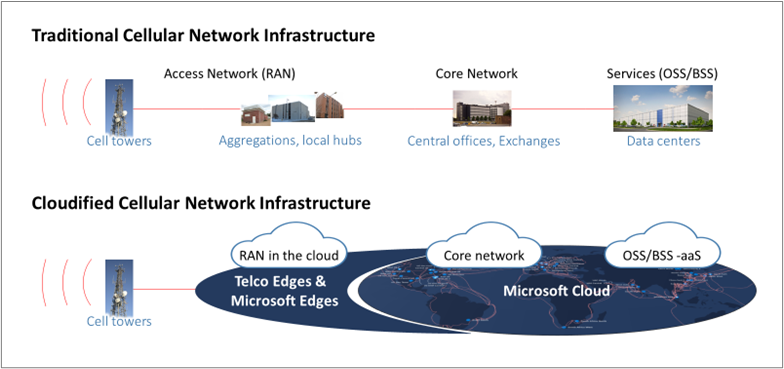
The project would need to overcome serious challenges to succeed. Public clouds were indeed designed for general cloud computing, not specifically for telecom. Any new system would need to be fast and reliable enough for a demanding industry, for example, meeting the “five nines” availability requirement, or >99.999% uptime.
To prove it could be done, Project Arno refactored a cellular packet core (EPC – Evolved Packet Core) to be “cloud-native” on Azure. An EPC is a large, expensive bundle of high-speed switches and high-performance packet processing boards that provide essential functions on a 4G LTE network. Project Arno’s rearchitected EPC for cloud can run on any Azure data center, self-replicating and load-balancing on demand as traffic rises and falls.
The team also developed a data plane acceleration method that can complete telecom network functions up to 100 times faster than existing specialized hardware, as well as a state sync mechanism that enabled simple modifications to conventional virtual network functions (VNF) to achieve high availability while processing millions of transactions per second.
In the summer of 2018, Project Arno delivered an internal recommendation: Microsoft should build the necessary capability in Azure to become a leading platform for future telecom infrastructure, including 5G.
Spotlight: Blog post
Eureka: Evaluating and understanding progress in AI
How can we rigorously evaluate and understand state-of-the-art progress in AI? Eureka is an open-source framework for standardizing evaluations of large foundation models, beyond single-score reporting and rankings. Learn more about the extended findings.
Changing Mindsets
Next up, the team faced a more difficult task in changing the mindset of the telecom industry. Showing the technology or even working demos would be insufficient. We needed to build a real-world example of a live cellular network powered by the cloud.
Bainbridge, Balkwill and Radunovic were already building a community LTE network for underserved neighborhoods in the city of Cambridge, UK. This 24/7 live network served 40 customers with wireless internet access from five sites around the city. We would conduct a trial infrastructure cloudification with this network.
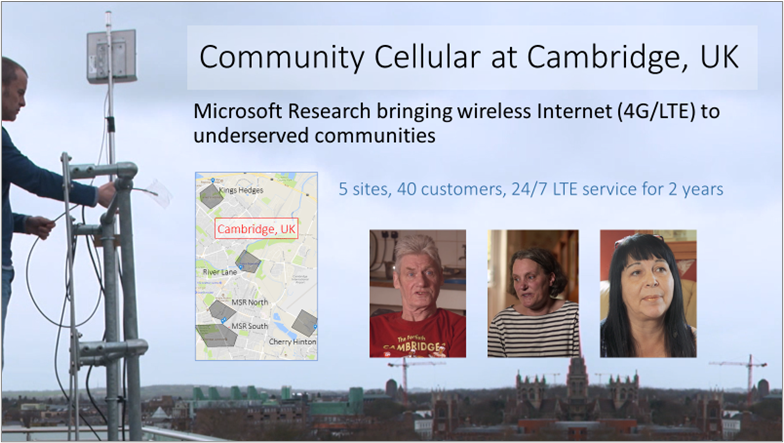
The network was live from 2016 until the spectrum license expired in 2018. We learned valuable lessons from this trial (opens in new tab) and the wealth of data collected has benefited Microsoft product developments for our operator customers.
We were now ready to show it to the industry.
We worked with other Microsoft teams to build a compelling marketing campaign designed to change minds. In 2018 and 2019, Project Arno researchers traveled to industry events like Mobile World Congress and visited telco operators around the world to share our vision and present the results of the Cambridge network trial.
A telecom industry movement
AT&T is a traditional leader in the telecom industry. It moved early to adopt network function virtualization (NFV), transitioning from proprietary products made by legacy equipment vendors to open platform and open standard options. Back in 2013, AT&T published a corporate strategy document (opens in new tab) which called for the company’s services to be built in a cloud-like manner and its network infrastructure to be built with commodity servers and white-box switches.
Championed by AT&T and other operators, NFV and telco cloud became a telecom industry movement. However, progress was slower than anticipated. Meanwhile, hyperscale clouds like Azure were advancing rapidly. New networking technologies were appearing and maturing on the hyperscaler ecosystems first. The gap between hyperscaler and telecom clouds was widening.
By 2018, some operators realized that they needed to revisit their telecom cloud strategy and reconsider hyperscaler clouds. Several industry executives visited Microsoft in search of a solution. Project Arno helped demonstrate that Microsoft could deliver on their needs.
As more customers inquired about telco cloudification, Microsoft product groups quickly built business plans and product offerings. Armed with the technical expertise, basic operational experience, and Project Arno as the early proof point, the company was ready to move forward. In 2020, Microsoft acquired two industry leaders in cloud-first network functions, Affirmed Networks (opens in new tab) and Metaswitch (opens in new tab), to form Azure for Operators (opens in new tab). This established Azure’s role as a leader in telecom infrastructure cloudification. The first operator onboard is AT&T. Starting July 2021, AT&T will outsource its telco cloud (AT&T Network Cloud) to Azure for Operators (opens in new tab). This was the mission of Microsoft Research Project Arno from the start and we are proud to be a part of this journey.
The cloudification of telecom has begun.
Learn More:




